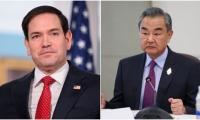The Russian invasion of Ukraine, and massive currency devaluation, are the top two ingredients of the petrol (and diesel) ‘bombs’ thrown on motorists in Pakistan recently.
Since most of our crude oil and refined petroleum products are imported, we remain at the mercy of international oil commodity markets that no longer swing by OPEC’s actions alone. The government’s only significant lever is the quantum of taxes and levies that it prescribes in the retail consumer prices to meet its budgetary needs.
It also fixes the oil marketing and distribution margins, and the prime minister personally approves uniform country-wide petroleum prices every two weeks. Despite (or because of) this tight regulatory embrace and market intervention, everyone including the local refineries, oil marketing companies, retail dealers, as well as consumers, is unhappy and struggling to make ends meet. Although deregulation and price liberalization will not immediately reduce retail prices of petrol and diesel in Pakistan, the sector needs these reforms to incentivize long-term investment and planning.
For example, Pakistan’s five domestic refineries must be upgraded and modernized to save foreign exchange (via import substitution) but without public funding support. This can only happen if their investment cases allow them to set their own ex-refinery prices, implicitly benchmarked against market competition from importers, traders, and state controlled PSO with almost 60 per cent market share (alongside Parco).
For a transparent price discovery mechanism in real time, mobile app technologies and a petroleum commodity exchange (like the electricity trading platform under implementation phase) should be employed. Regulatory enforcement agencies would also need to keep a close eye on any price manipulation, collusion, and cartelization attempts. A huge fear of the unknown, exacerbated by a couple of country-wide fuel shortages and dry outs in the recent past, prevents policymakers from taking this leap of faith in the market. The sooner they get over it, the better for everyone including the consumers.
Since taxes and levies are regressive in nature, and across-the-board fuel subsidies unsustainable, the government should launch a targeted, fiscally tenable, and foolproof relief program for motorcyclists and rickshaws. Another way to lower the price of petrol and diesel in Pakistan is to reduce their long-term demand by increasing the penetration of electric cars, buses, rickshaws, and motorcycles. The e-mobility transportation sector is growing rapidly elsewhere due to falling battery costs, improving technology, regulations, subsidies, expanding charging infrastructure footprint, and more EV manufacturers entering the space.
However, this will have to go hand in hand with power-sector reforms in Pakistan to reduce the charging cost, improve quality of supply, and strengthen the grid infrastructure. The domestic automobile industry would also need to step up to locally assemble and manufacture affordable EV vehicles to support electrification of the transportation space, if an enabling set of policies and incentives are in place.
In summary, there could well be more than one way to skin the energy cat, but daily firefighting and band-aid treatments will not address the sector’s systemic issues. Make no mistake about it, structural reforms and turnarounds are long and painful journeys, are not a win-win for all, and require a paradigm shift in thinking and approach. If we truly believe the customer is king, all other considerations and current practices that do not serve their needs ought to be set aside. The bottom line is that we need less (not more) government in the show by restricting its role to policymaking and regulatory oversight only.
As a fundamental principle, the state must now stop offering its sovereign balance sheet to energy suppliers and instead direct them to sign corporate agreements with commercial and industrial customers at non-regulated tariffs. A light-touch government footprint (other than for truly strategic G2G transactions or the financing of nuclear, dam-based hydro, and cross border energy projects) is needed for a more sustainable and cost competitive sector.
Reforms are frustrated by deeply entrenched vested interest groups who want to continue extracting rent from the same broken system. It is a collective failure, and lack of will and imagination, that we are still following the 1990s investment model.
A unified federal ministry of energy, alongside independent regulatory agencies, is a simpler and more effective organizational structure for the executive. Yes, we need to enhance the institutional and personnel capacity of Nepra and Ogra but that is part of the evolutionary process. No one is arguing to give carte blanche freedom to the private sector to loot and plunder the public under some misguided laissez-faire capitalist ideology. Far from it, we have more than enough checks and balances in our ecosystem (executive, bureaucracy, regulators, parliament, judiciary, media, civil society, among others) to protect the public interest.
Relinquishing control will not be easy for the government, but it is a way forward in the right direction. Finally, it will be tough to turn Pakistan’s energy sector into an island of excellence if it remains surrounded by a sea of chaos. Macroeconomic and political stability are, therefore, indispensable allies and prerequisites of a successful turnaround in the coming years.
Concluded.
The writer is a former SAPM on Power & Petroleum







